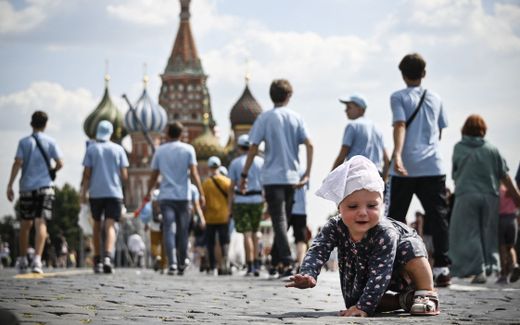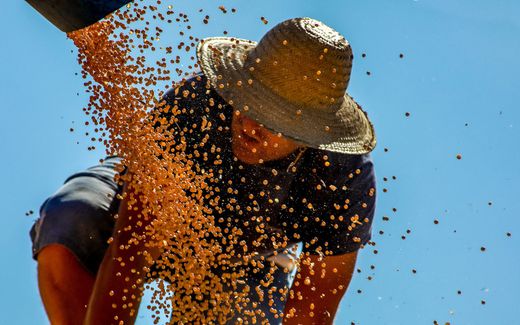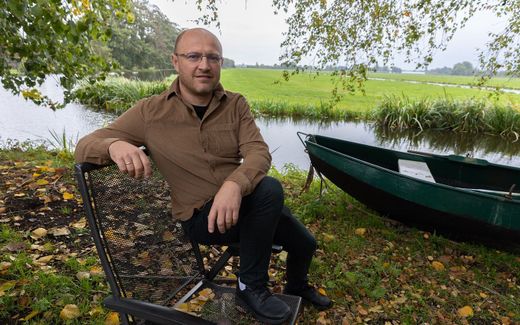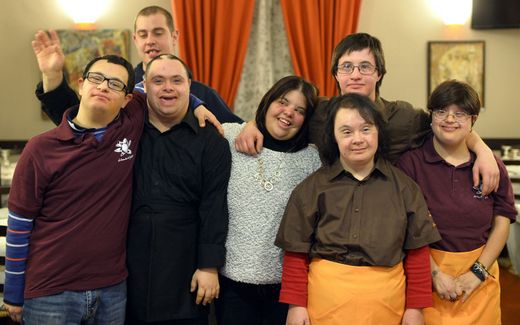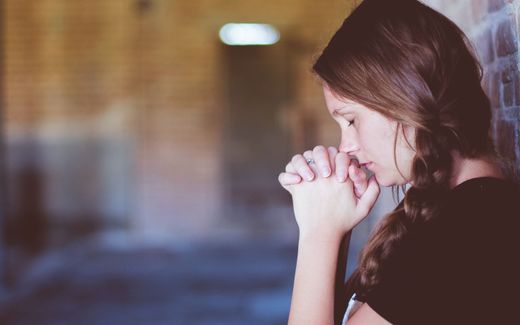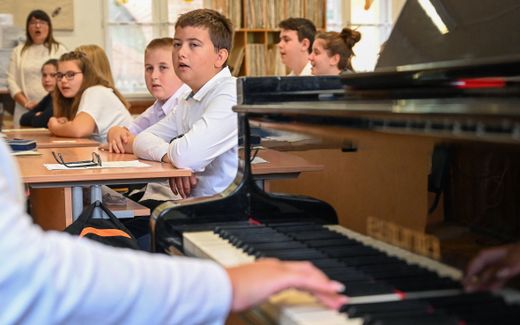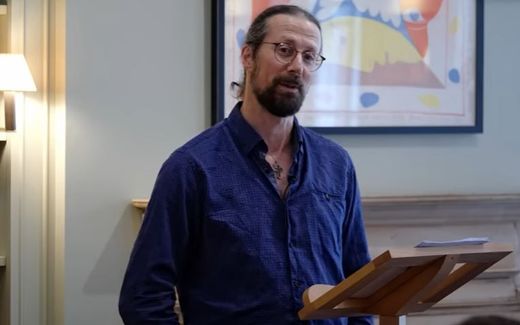Overview: German Christians are the first with Thanksgiving (but not the last)

All over Europe, Christians celebrate a form of harvest thanksgiving. Photo AFP, Norbert Millauer
Christian Life
It’s October. Christians in Europe see it as a time to give thanks and reflect upon God’s blessings.
Germany
Last Sunday, several German churches celebrated Ertedankfest (harvest thanksgiving), on the first Sunday in October. The festival is observed in many Catholic and Protestant churches and is seen as a Day of Thanksgiving. It also shares roots similar to many other European harvest celebrations around Austria and the Netherlands.
According to Religionen-entdecken, many traditionally celebrate the day by bringing fresh fruit, cakes, or homemade bread to their church altar. A crown made from grain is often placed in many sanctuaries. During the services, songs of thanks are sung along with prayers for preserving God’s creation. Harvest wagons are often pulled on local streets after the services. All needy people in the area are usually invited to a community meal.
Recently, the war in Ukraine, high food prices, and climate change have been considered in this year’s celebration. As reported by Evangelische Zeitung, many fundraisers were set up for the hungry and needy this year. Despite 11 million tonnes of food being thrown away in Germany, approximately 735 million people continue to go hungry worldwide.
Celebrated since the third century, many Christians believe that Germany’s Day of Thanksgiving has its origins in the Bible. The book of Genesis tells us already in chapter 4 about Cain and Abel sacrificing fruit and a young animal. Themes of harvest also run throughout Jesus’ parables, according to Evangelische Zeitung.

For pastor Anselm Grün, Ertedankfest is a day to thank and think. “Every year, Thanksgiving reminds me to reflect on a life rooted in gratitude. Etymologically, the word “thank” comes from “think”. I find a wonderful meaning: Am I thinking correctly about my life? Do I perceive what is given to me every day and what has been given to me? Do I know that I am connected to everything living on this earth?” he wrote in Evangelische Zeitung.
Brother Bonifatius Holzmann from the Benedictine Abbey in Plankstetten believes in staying connected to earth’s blessings by baking bread. In addition to baking 3,500 rolls and pastries every week, extra bread is made regularly for the monastery’s Thanksgiving market.
“I owe the fact that I can bake to the Creator of gifts. I always remind myself of this because I get to play a bit of a creator when I bake – I create a new food from initially indigestible grain that people can then enjoy,” he said to katholisch.
How Thanksgiving is celebrated around Europe:
The Netherlands
The Dutch have their “Dankdag”. Held on the first Wednesday in November, many Reformed churches observe it as a day of thanks for the crops and the hard labour involved in this year’s harvest.
Christian schools are traditionally closed on that day, as on the Day of Prayer at the season’s beginning in early March. The main tradition is that there are church services on the day.
Switzerland
Switzerland knows “Jeûne fédéral” in French, “Digiuno federale” in Italian, Eidgenössischer “Dank-, Buss- und Bettag”. It takes place on the third Sunday in September, commonly observed as a day of repentance and prayer. The holiday has been celebrated by both Catholics and Protestants. Originally dating back to the 16th century, it became an official holiday in 1832. Today, it is seen as a day to spend time with family.
Slavic region
Poland, Ukraine, Belarus, Czech Republic, and Russia (Polish: Dożynki, Russian: Обжинки, romanised: Obzhynki; Belarusian: Дажынкі, Prachystaya; Czech: Dožínky, Obžinky).

Widely observed in the Slavic countries, the festival commemorates the hard work of farmers after the harvest. The day is also a time to grant success on next year’s bounty. The holiday can be traced back to as early as medieval times, but it also has its roots in pre-Christian times.
In Poland, it is often referred to as the Presidential Harvest Festival. The day begins with a Catholic mass followed by a special ceremony of dances. It is usually held in September. Many see it as a time to dress in the traditional costumes of their region. While the festivals differ depending on the region, two customs are kept throughout the country. The bread remains as one of those traditions.
Housewives bake a large loaf of bread from the new grain, which represents the “goods of the Earth”. The wreath is another significant custom in this harvest festival. It is often crafted into a crown or cap made from the ears of grain or corn. It can be decorated with flowers, berries, and even gingerbread figures.
Every year, villages compete for the most beautiful wreath in their area. The day is also celebrated with picnics, fairs, farming exhibitions, and performances.
Sweden
Sweden has “Tacksägelsedagen”. While not a public holiday, it is observed by many churches on the second Sunday of October. It is often seen as a day to thank God for the earth’s blessings to humanity. Most bring jam or fruit to their church, sold or auctioned off to the congregation or the needy.
Norway
Norway has “Takkedag”.
The day is celebrated in some local Methodist churches before the fall. Takkedag is often held on 18 June and is seen as a way to wind down from the working year. The day is also an opportunity to thank God for that year’s blessings and wish each other a good summer.
Finland
Finland knows “Kiitospäivä”.
While harvest celebrations exist, it is not typically celebrated throughout the country. However, some Thanksgiving celebrations are held within Oulu’s Finnish-American community. These are typically celebrated on the fourth Thursday in November and involve American traditions such as having family gatherings and eating turkey.
Italy
Italy celebrates “Giornata del ringraziamento”.

The Conferenza Episcopale Italiana (CEI) wrote a decree in 1974 that encourages all dioceses to set aside a “Thanksgiving Day”. It is held on the second Sunday in November and is intended to thank God and remember His blessings. It is also meant to pay respects to the natural environment and show solidarity for those who work.
Various festivals, such as the Harvest Festival of Noicattaro, are often held nationwide in September or October. Churches or inns often host them and involve sampling local foods.
Spain
While the American Thanksgiving is traditionally told as a shared meal involving English Pilgrims, Spanish settlers may have first celebrated it. After Pedro Menéndez de Avilés founded the first European settlement in 1565, he realised he needed to stop French advances in the American south. Together with the help of the Saturiwa Indian tribe, they were able to reclaim land that was once granted to Spanish kings. As a token of gratitude, Pedro Menéndez de Avilés held a large meal and a Catholic mass with some members of the Saturiwa tribe.
Some historians consider this as the real Thanksgiving. However, some experts believe the real celebration occurred twenty-three years before the British Pilgrim celebration. Spanish explorer Juan de Oñate held a large meal with several American Indians along the Rio Grande. It was a time of celebration after walking 500 kilometres through the Mexican desert without food or water.
While Spain does not generally have a Thanksgiving Day, some choose to celebrate the American holiday in November.
Portugal
September and October are set aside to commemorate the current year’s harvest. The Wine and Music Valley celebration in Lamego takes place between 10-11 September. It pays tribute to the fine wine in the area. Another celebration, Festa Do Vinho Madeira, observes the grape harvest in Madeira and occurs between the first and third weeks of October.
Related Articles



